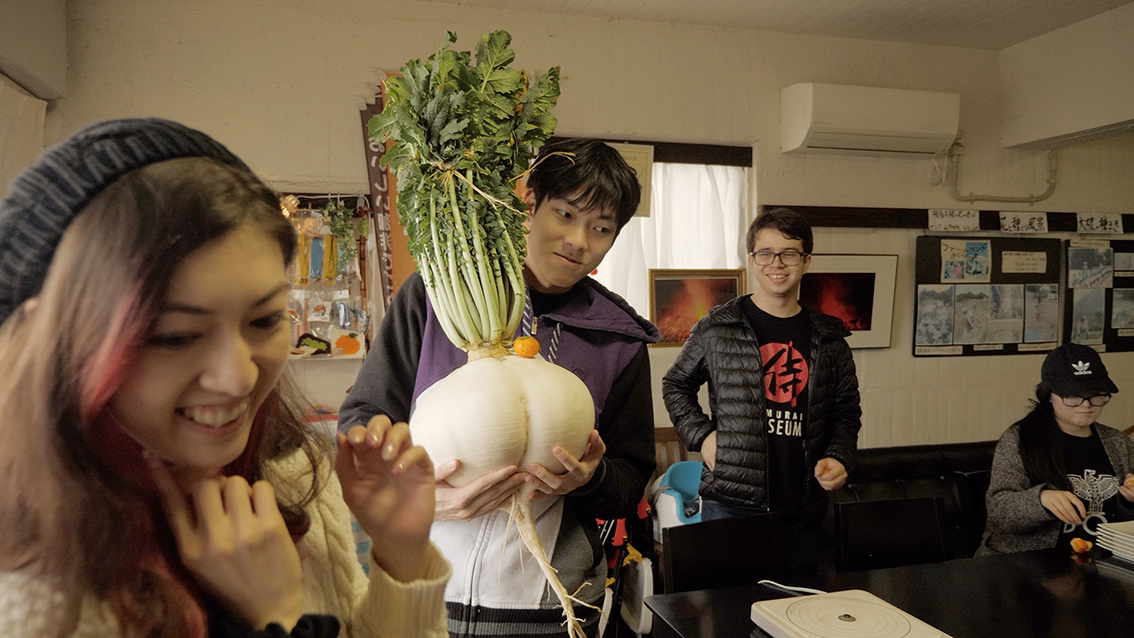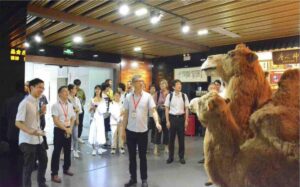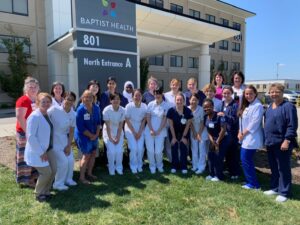Students of San Jose State University, U.S. visited Kagoshima University in January 2020, and vice-versa, students of Kagoshima University visited San Jose in February-March 2020.
Eight San Jose State University (SJSU) students and their professor visited Kagoshima, Amami, and Okinawa from 5th to 18th January 2020 as part of the course: “Local and Minority Culture in Japan” organized by Kagoshima University (KU) in collaboration with SJSU. The course examines how identities and cultures of the ethnic minorities of Japan, such as Okinawans and Amamians, changed over time from Edo era to present, interacting with majority groups in mainland Japan and the U.S. under their political controls.
SJSU students participated in an American literature class in Kagoshima University (KU) and had discussions with KU students. They made research trips to Japanese gardens of Sengan’en, and Chiran Samurai Residence area where they enjoyed viewing period traditional houses and traditional Japanese gardens and enjoyed local foods & produce such as Ramen & Shochu. On Sakurajima island, they surveyed the geological aspects of the volcanic island and had an encounter with largest radish variety in the world, the ‘Sakurajima Daikon’ grown in ash fields at the foot of the active Sakurajima volcano.
Please click on the image below to see the cooking with Sakurajima Daikon video that the students engaged in:
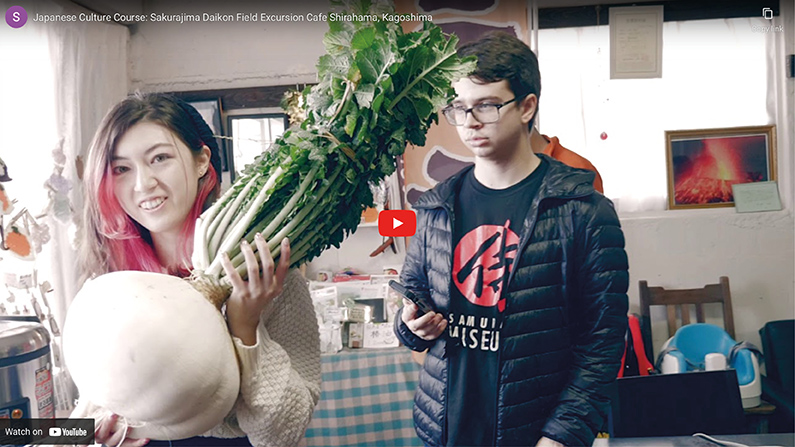

Also, whilst in Chiran, they visited the Chiran Peace Museum where they learned about the experiences and memories of the young Kamikaze suicide pilot corps in the second World War. In Amami and Okinawa they discovered how local folk culture differs from “Japanese Culture.” A field research in Amami was made collaboratively with KU students who major in anthropology and archeology. They interviewed local elderly people on whether they identify themselves either as Amamian or/and Japanese.
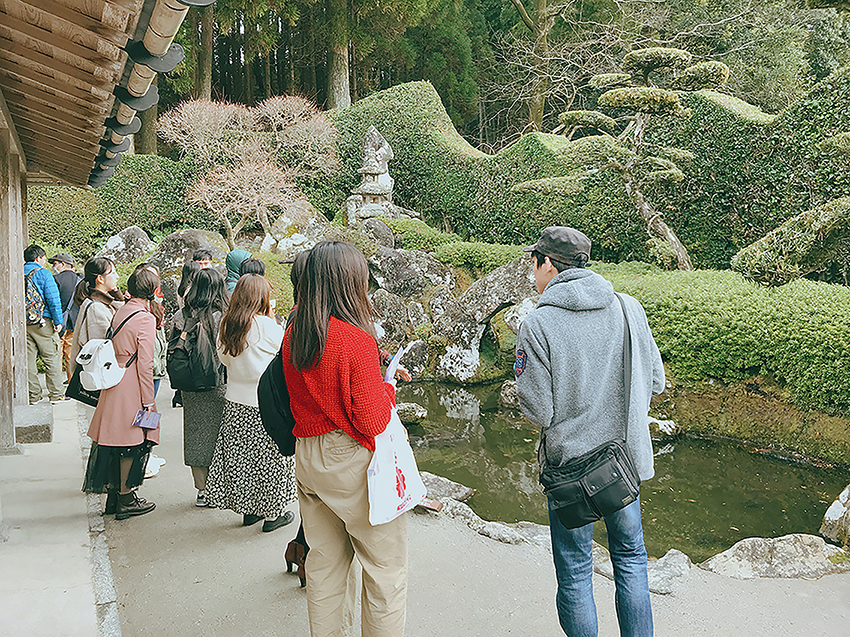
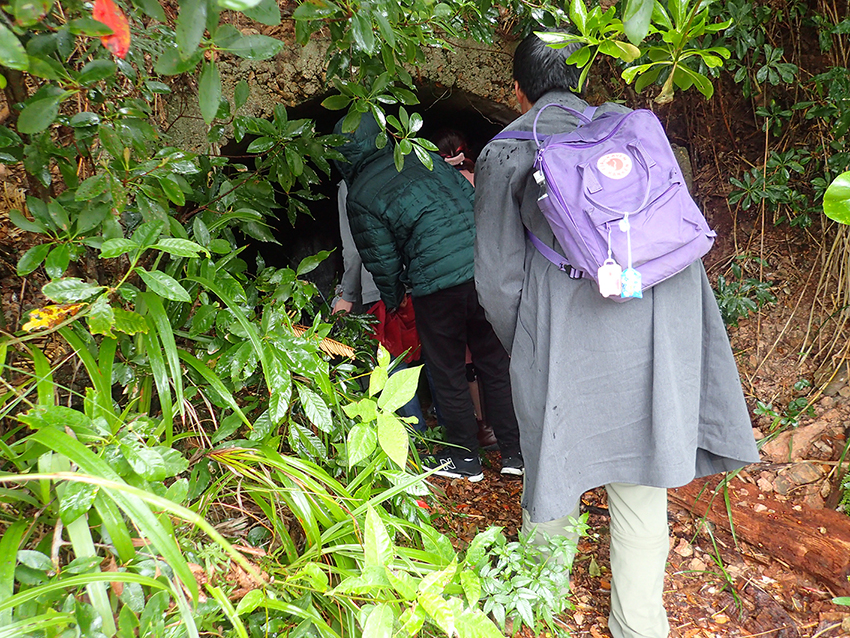
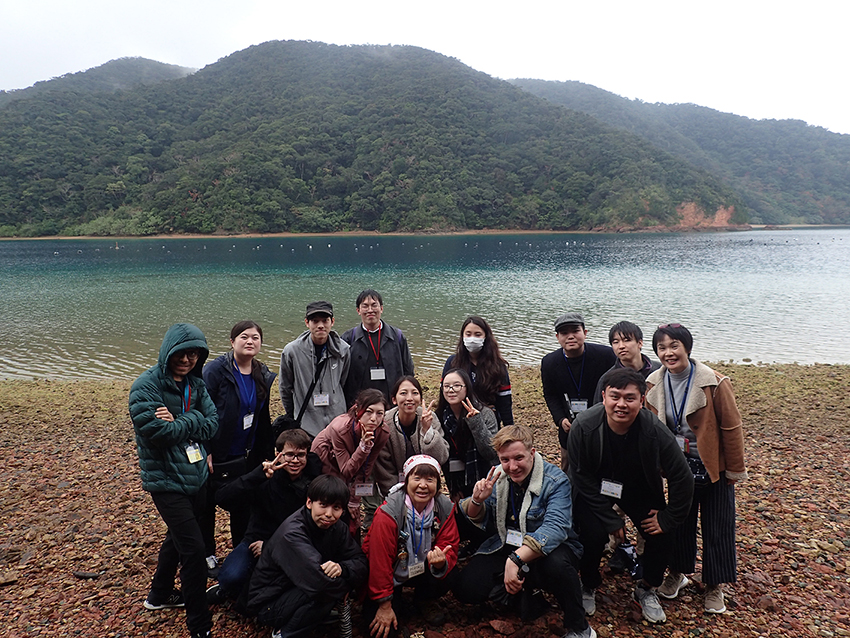
A month later, a group of Kagoshima University students visited California to participate in a course consisting of a leadership workshop and hands on training at educational institutes and business companies in San Francisco Bay Area. KU students visited SJSU campus where SJSU students made a poster presentation about their research findings during their Kagoshima, Amami, Okinawa trip and shared their experiences in Japan with KU students. It was an exciting event in which both student bodies confirmed their friendships and enjoyed interactions.
Course Schedule: San Jose State University
| Date | Topics/Activities |
|---|---|
| 1/4 (Saturday) | Depart from the United States |
| 1/5 (Sunday) | Arrival at Kagoshima Airport |
| 1/6 (Monday) | Orientation 9am-11:30am 11:30-12:30 Lunch at Kagoshima University Cafeteria 12:50-14:20 Discussion and interview with KU students of American Literature course 14:30-16pm Discussion and interview with KU students of Comparative culture course 16-18 Campus tour of Kagoshima University 8-20pm Mixer @Inamori Memorial Building 2F Vege Marché |
| 1/7 (Tuesday) | Sakurajima Mountain sightseeing 8:30am Start Sakurajima nature and agriculture lecture 10:30 Arimura Lava view point Walking 11:10 Sakurajima Visitor Center (Museum, Foot Bath) 11:40 Radish cooking at Café Shirahama 12:40 Lunch at Café Shirahama 15:00Reimeikan museum (Kagoshima History and Culture) Dinner: Kagoshima Ramen/Soba/Udon |
| 1/8 (Wednesday) | 9:00 Start from Kagoshima University 10:00 Chiran Peace museum 11:00 Lecture in English 12:15Chiran Samurai Residence Garden 13:00 Lunch 14:30 Shouchu, Satumaage and Karukan making and eating at Musouzou and Musouan 16:00 Scholarship procedure |
| 1/9 (Thursday) | 9:30 Sengan’en (Garden) & Shuseikan museums* 11:00 Satsuma Kiriko factory and shop 12:00 Shiroyama hiking 13:00 Lunch: Biking restaurant in Reimeikan 14:30 Nanshuu park and Takamori Saigo 16:00 Ferry Port 18:00 Departure to Naze |
| 1/10 (Friday) | 5am Arrive at Naze Port, Breakfast, Drop by hotel 8am Amami city Naze Elementary school (center of reversion movement), cultural exchange with Naze elementary school kids, Ogamiyama park walk, statue of Yoshiro Izumi and reversion memorial statue, View of Naze city, 10:30 Amami museum (History&culture of Amami) 12:30 Lunch, Keihan at Torisen 14-16pm Yumeorinosato Oshima Tsumugi Kimono wearing or dyeing experience Reading: The Return of the Amami Islands by Eldridge Chapter2 |
| 1/11 (Saturday) | 7:15am Move to Koniya harbor, arrive at 8:45am 9:15 Ferry to Kakeroma Lunch: Umi Yado Kakeroma WWII battle sites visit and talk with elder |
| 1/12 (Sunday) | 5:30am Ferry From Naze to Okinawa, Naha |
| 1/13 (Thursday) | 8:30 am Shuri Castle*, Benzaitendo, Ryutan, King’s graveyard* 11-12am Shikina garden* ¥400 13pm Lunch at Omoshiro machi 14-16pm Okinawa Prefecture museum (Okinawa history and culture) |
| 1/14 (Thursday) | 9am Namino Miya (Okinawan shrine) 10-11:30 Okinawa International Peace Research Institute ¥500 12-13: Okinawa soba 13:30 Bingata dyeing experience at Kokusai street ¥2570 15pm-Kokusai street walk( Makishi public market, Tenbusu Naha2F Sakurazaka Theatre) |
| 1/15 (Thursday) | 9am-13pm Gyokusendo and Okinawa world Lunch: Abura somen 14-17pm Okinawa Peace Memorial Park* |
| 1/16 (Thursday) | 9am Kakazu takadai park(Futenma Base) 11:30 am Road station Kadena (Kadena Air base) Lunch: Uchinaa Bento at Kadena Michi no eki 13:30Goza histreet museum (Free) and Eisaa museum(Free) 3pm Katsuren Castle(Free) |
| 1/17 (Friday) | 10am Yomitan village, Chibichirigama, Shimukugama, Gosamaru’s Zakimi castle ruin* 13pm Lunch : Tako rice at American Village 14-16Chatan (American Village, Ahama beach, Sunset beach) |
| 1/18 (Saturday) | Departure for the US. |
